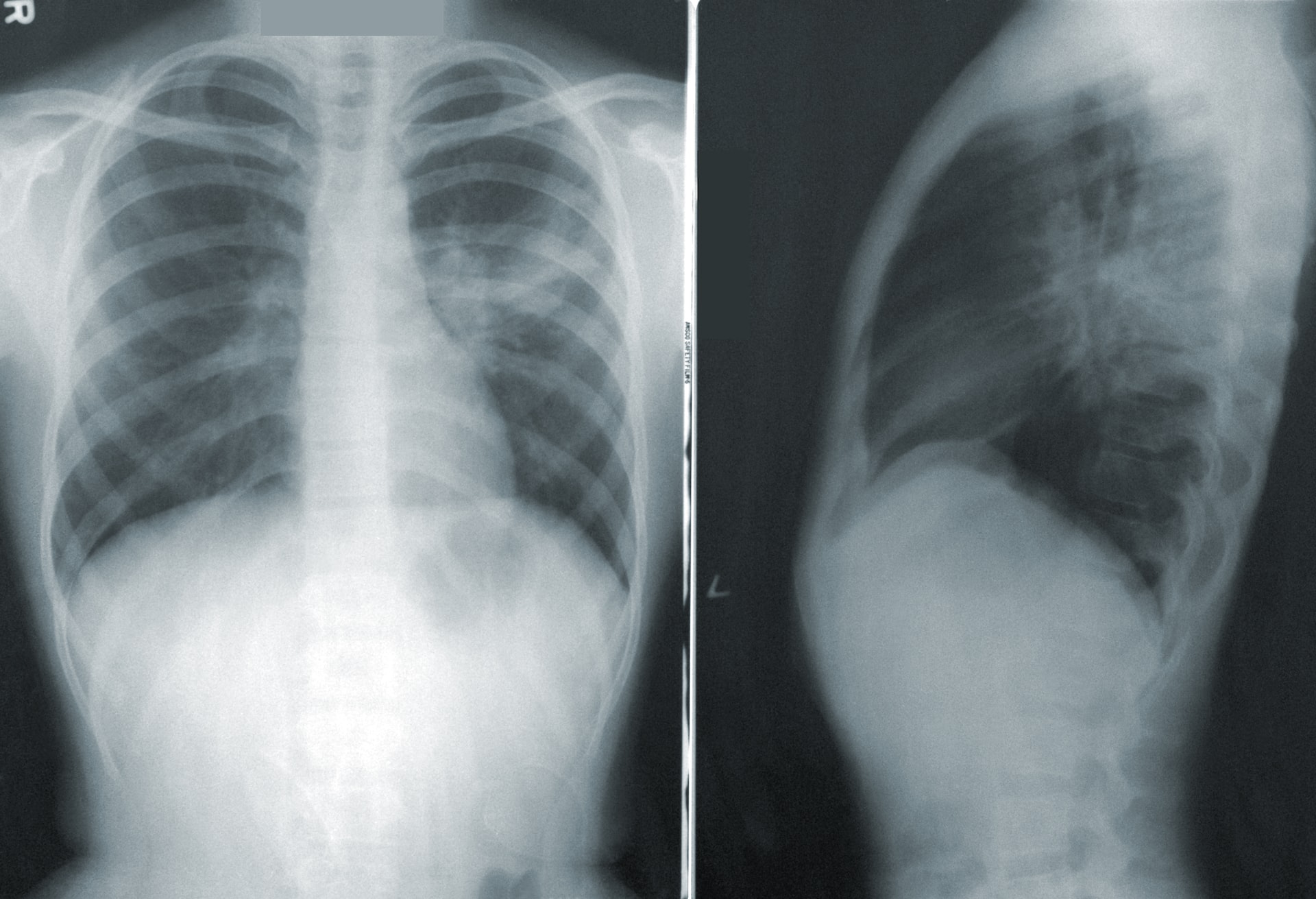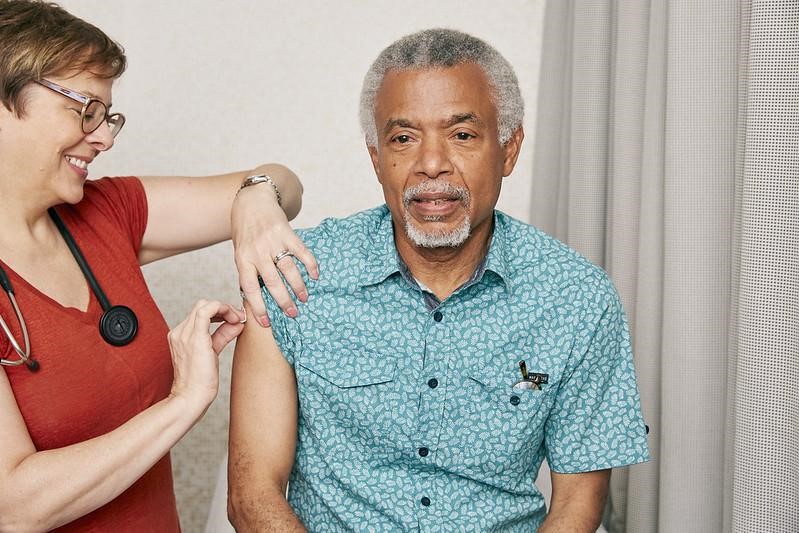Pneumococcal vaccination, which can prevent certain, especially severe, types of pneumonia, is recommended for older adults and people in at-risk groups in many countries. Yet, especially in the most deprived groups, uptake remains low, leading to deepening health inequalities.
With immunisation against Covid-19 taking centre stage, it is vital that the preventative vaccines used to protect people from diseases like pneumonia and to ensure longer, healthier lives, are not forgotten.
Indeed, we know that across many countries, coverage is low. Part of the issue is lack of awareness, with studies suggesting that across Europe, less than a third of adults are aware that it’s possible to be vaccinated against pneumonia. But we also know, as is the case with other routine immunisations, that those not protected are often those most in need of it.
In truth, very little has been published on social inequalities in adult pneumococcal vaccination uptake, and even less on what’s being done to tackle them. A new global report published by the International Longevity Centre UK, the UK’s leading think tank on ageing and demographic change, aimed to fill this gap.
ILC conducted 34 stakeholder interviews with experts from Australia, Canada, Germany, Japan, the Netherlands, Spain, the UK and the US. The stakeholders interviewed included healthcare professionals (HCPs) and experts in healthcare and public health delivery, adult pneumococcal vaccination, and health inequalities.

What we found
Which groups are at risk of poor uptake?
Across these eight countries, interventions to improve inequities in uptake should be targeted at the following groups: ethnic minorities (including migrant groups), indigenous populations, individuals living in areas with poor healthcare infrastructure, those with low incomes, or conservative political attitudes, and undocumented and homeless people.
In some countries, the inequalities are staggering:
- 2020 data from the US finds a 24.3% disparity in uptake between Hispanic adults (48.1%) and White adults (72.4%) and in 2017, a 23.5% disparity in vaccination rates between the lowest and highest income deciles.
- In 2018, Australia’s indigenous population accounted for only 3% of the total population but represented 11% of all instances of invasive pneumococcal disease. And uptake rates for those aged 50-64 declined between 2004-05 and 2012-13, from 30% to 23%.
What barriers do marginalised groups face?
ILC’s research found two types of barriers that marginalised and underserved populations face:
- Barriers contributing to inequity (which specifically prevent marginalised groups from getting vaccinated)
- Structural barriers (which affect the entire adult population)
Both must be tackled to see an improvement in uptake rates and a reduction in inequalities.
Barriers contributing to inequity include:
- Suboptimal access to personal health records (which is necessary for individuals to take control of their health): ‘In Ontario, we still have a yellow paper card that manages vaccination,’ explains Katrina Bouzanis, Programme Manager, International Federation on Ageing, Canada. ‘So, if you lose that card, you basically have no record of what you’ve received and what you have. And the doctor won’t know and if you change doctors or anything like that, you basically have no record.’
- A lack of targeted messaging: ‘…Very few older adults know that they are eligible, we generally need to advertise this better,’ says Dr Igarashi Ataru, Associate Professor, Unit of Public Health and Preventative Medicine, Yokohama City University School of Medicine, Japan. ‘And where there has been some advertisement at the regional level, it needs to be more targeted to subgroups with low uptake.’
- Access barriers, including: cost, and being unable to access a primary care facility due to physical disability or living in a resource-poor area. ‘Unfortunately, the way that our health insurance system works, [the pneumococcal vaccine] is maybe covered by your providers. So, you pay, and they might reimburse you… If someone has to decide between buying groceries or buying a vaccine even with reimbursement, groceries are going to win every time,’ according to Stephanie Perniciaro, Associate Research Scientist in Epidemiology (Microbial Diseases), Yale School of Public Health, US. ‘And that’s normal. That’s not unexpected. I feel like cost is the most important barrier.’
- A lack of trust in government and the health system: ‘When we saw the prioritisation of indigenous seniors, finally, in COVID-19, a lot of the times we were hearing that they still didn’t trust it, because it was this continuum of, ‘Why are we being put first again? because previously, when we were put first we were being used as guinea pigs, being tested on and all of these things.’ So it was this double edged sword of being like, ‘Awesome. We’re prioritising vaccines.’ But on the flip side of it, you know, solid questions.’ says Laura Jamieson, Field Support, and Frankie Antone, Health Policy Analyst, from Ontario Federation of Indigenous Friendship Centres, Canada.

Alongside these barriers, our stakeholders stressed that there is inadequate tracking of who is and isn’t receiving their vaccinations, making it harder to target interventions and improve uptake.
Structural barriers include:
- Policy makers failing to educate the public and a lack of awareness on behalf of healthcare professionals on the value of the pneumococcal vaccine. ‘The most important campaigner is your doctor, but the doctor is not suggesting [the pneumococcal vaccine],’ says Esther Martinez Almazan, Geriatrician, Spanish Geriatrics Society, Spain.
- Recommendations around adult pneumococcal vaccination that are unclear or that change frequently, which makes it hard for public health and HCPs to recommend vaccination to patients. ‘So we changed the age that the adult pneumococcal vaccine is funded [70+]. But we still get a lot of calls to the public health unit from the GP saying, ‘Oh, you know, this person here is 65, do I have to give them anything now?’ It’s still ingrained into them that those 65 plus are eligible… These changes came in not long before the pandemic, so I think a lot of people just aren’t up to date with it,’ explains Patrick Cashman, Immunisation Coordinator, Hunter New England Health, AU.
- National Immunisation Technical Advisory Groups (NITAGs) that don’t include experts on adult immunisation, or anyone who works directly with patients or groups at risk due to social vulnerabilities.
- A lack of HCPs with the ability to administer the vaccine
What needs to happen next?
There’s a meaningful push to safeguard population health in light of the significant toll the COVID-19 pandemic has had on societies and the rise in inequalities at a global and a regional level. But we still need action at both levels to properly tackle inequalities in adult pneumococcal vaccine uptake and safeguard population health.
Some of the key recommendations include (see report for the full list):
Implementing a ‘call and recall’ system for adult pneumococcal vaccination. Each vaccination invitation should be accompanied by educational information on pneumococcal disease, the benefits of vaccination, and the risks of not being vaccinated.
Better reporting and data collection at the local and national levels. The UK and US currently capture data about uptake inequalities for flu vaccination across different demographics: this should be adopted by other countries so that it can be used for targeted health management approaches.
National 10-year strategies to reduce health inequalities. These should be in line with WHO’s 2030 immunisation agenda, with targets to improve immunisation throughout people’s lives.
Introducing accreditation for healthcare providers to indicate those with inclusive and diverse spaces.
Allow individuals to receive multiple vaccinations during one clinic visit.
Ensure NITAGs prioritise adult vaccination by involving a diverse group of stakeholders. These should be experts on adult immunisation or the needs of older people, HCPs who work directly with patients, and community stakeholders who understand the barriers to uptake.
Vaccination remains the primary and most effective preventative strategy for protecting older people against pneumococcal disease. Yet without tackling inequalities, we’re unlikely to see any real improvements in health and we will continue to fail those most in need.
That said, with the EU’s revised Global Health Strategy, the WHO’s Immunisation Agenda 2030 and UN Secretary-General calling for a sustained focus on preventative healthcare delivery at the 2022 World Health Summit in Berlin, there is a window of opportunity for us to safeguard our older population. The COVID-19 pandemic has acted as a harsh reminder that tackling health inequities must be at the heart of public health policy and strategy. We must act now.
Arunima Himawan is a Senior Health Research Lead at ILC-UK.
See publication for references, findings and research funding




